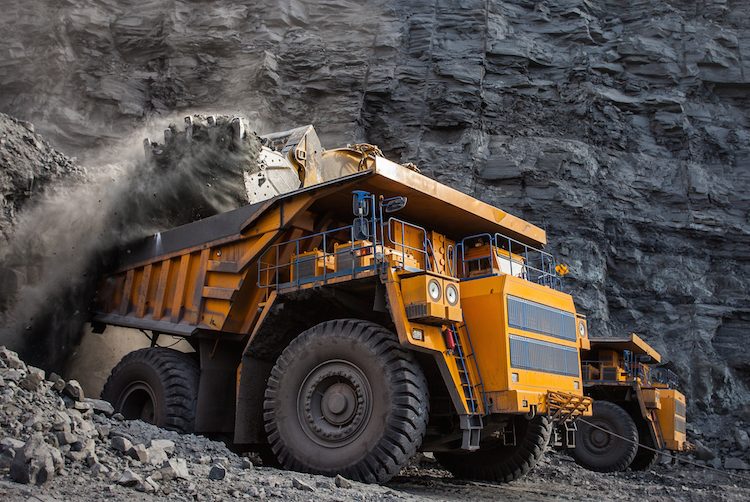The government continues to boost state revenues from the mineral and coal mining sector through Non-Tax State Revenue (PNBP). The state revenue is charged from the sale or deposit of royalties from the mining sector.
This obligation is applicable to every mining company holding a Production Business Permit (IUP), a Special Production Business Permit (IUPK), or a PKP2B holder. In fact, the Ministry of Energy and Mineral Resources has reinforced royalty payments through the issuance of various regulations.
The Ministry of Energy and Mineral Resources recently issued the Decree of the Minister of Energy and Mineral Resources No. 18.K/HK.02/MEM.B/2022 on Guidelines for Payment or Deposit of Fixed Contributions or Royalties, and Coal Production Results Fund (DHPB). The decree also regulates the cost of mineral and coal mining business activities.
The regulation rules on the procedure for depositing production fees/royalties & DHPB specifically for Coal Mining Concession Work Agreement holders (PKP2B) that must make a provisional payment. The amount of the fees/royalties & DHPB is calculated based on the quality and quantity of mining products to be delivered or shipped per transaction by calculating the rate multiplied by the sales volume multiplied by the basic royalty price at the date of provisional manufacture and royalty payment.
The decree also regulates the occurrence of underpayment gap based on the calculation of the final royalty payment or DHPB. If this happens, the gap must be paid immediately no later than 30 (thirty) calendar days from the date of the transfer or the transaction.
However, questions remain related to companies holding IUP/IUPK or PKP2B which have paid royalties and DHPB in accordance to the above-mentioned calculation but are receiving notification letters from the Directorate General of Mineral and Coal about underpayment royalties and DHPB gap. Can the companies file an objection by filing a lawsuit to the Director General of Mineral and Coal through the State Administrative Court?
Article 1 number (10) of Law No. 51/1986 in conjunction to Law No. 9/2014 in conjunction to Law No. 51/2009 on State Administrative Courts regulates disputes in the field of state administration between persons or civil legal entities and state administrative bodies or officials as a result of the issuance of state administrative decisions in accordance with applicable laws and regulations.
The notification letter of underpayment of royalties and DHPB gap by the Director General of Mineral and Coal cannot immediately be used as the basis for a lawsuit against the Director General of Mineral and Coal in the State Administrative Court. Article 1 number (9) of Law No. 51/1986 stipulates that decisions or stipulations issued by state administrative bodies or officials must contain state administrative legal actions based on legislation that are concrete, individual and final, and cause legal consequences for a person or civil legal entity.
Hence, the notification letter of the underpayment of royalties & DHPB gap issued by the Director General of Mineral and Coal cannot be used as an object of dispute.
Before filing a lawsuit through the state administrative court, a company that receives a notification letter of the underpayment of production fees or royalties & DHPB gap may file an objection to the Director General of Mineral and Coal as stipulated in Government Regulation No. 34/2010 on the Submission and Settlement of Objections to the Determination of Non-Tax State Revenues Payable.
The procedure for filing an objection is regulated by Article 2 paragraph (1) Chapter II regarding the Submission of Objections that states;
“Payers who can file objections to the determination of Non-Tax State Revenues Payable are Payers who calculate their own Non-Tax State Revenues Payable”.
Article 2 paragraph (2) of Government Regulation No. 34/2010 stipulates that an objection can be filed if there is a difference in the calculation between the amount of Non-Tax State Revenues (in this case the production fee or royalty & DHPB) calculated by the company and the calculation result from the Director General of Mineral and Coal.
The difference in calculations does not immediately enable the company to directly file an objection to the Director General of Mineral and Coal related to the amount to be paid. However, Article 3 Government Regulation No. 34/2010 regulates that new objections can be filed after the company makes the payments in accordance to the amount of Non-Tax State Revenues Payable determined by the Government Agency.
After making the payment, the company can file an objection within three months from the calculation date that has been determined by the Director General of Mineral and Coal, with the procedure for filing as follows:
- attach an explanation and reasons for filing an objection;
- there is a detailed calculation of the amount of production fees or royalties & DHPB made by the company itself;
- there is a valid proof of payment in accordance with the calculations issued by the Director General of Mineral and Coal;
- other supporting documents; and
- tax payer identification number
If the company submits an objection after the specified period, it will be rejected by the Director General of Mineral and Coal through an official rejection letter. On the other hand, if the company has submitted an objection, but the Director General of Mineral and Coal does not submit a response to the objection within 12 months from the date of the objection letter, it is considered approved.
If the Director General of Mineral and Coal has responded to the objection, but each party maintains its respective argument, the company can file a lawsuit through the State Administrative Court as a last resort.
Author / Contributor:
| Muhammad, S.H.
Associate Contact: Phone : +62-21 799 7973 / +62-21 799 7975 |
